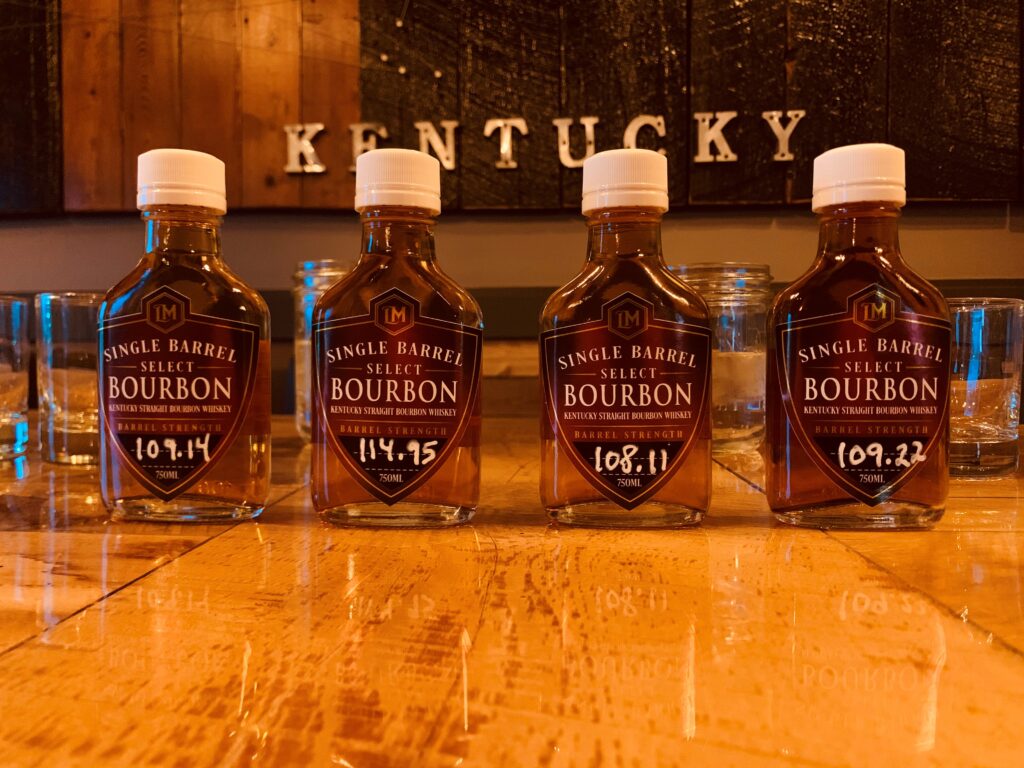How to taste Bourbon Whiskey
In my experience of tasting bourbon, some were good, some excellent, and some were less than average. However, I learned to look for specific nuances that became easier for me to identify. Today, after tasting over 400 different whiskeys, I have a few observations to help guide you on your tasting journey. Everyone has unique tasting abilities, and other people may taste differently. If everyone tasted the same flavors, there would be less competition and innovation with whiskeys. Bourbon brands develop raving fans because consumers like that flavor profile. It is okay to enjoy a bourbon that is not the most flashy and fashionable; enjoy what you want.
Vanilla and Caramel
These are the two flavors I identify in most bourbons. The vanilla derives from the Lignin in the oak barrel. Lignin produces Vanillin, which results in a vanilla note. I believe the caramel notes I pick up are from the barrel’s charring or toasting. The charring caramelizes the sugar from the oak and introduces it into the spirit. I believe the flavor notes of toffee, butterscotch, and syrup are related to this.
Smoky
To me, smoky comes from the charring in the barrel. I identify it more in older bourbons and whiskeys, and usually only from whiskey introduced to a new charred oak barrel. Additional flavor notes would be tobacco, char, or even leather.
Spicy
This one is relatively easy to identify. Rye bourbons have a natural spice, the most common being a peppery flavor. A wide range of Rye mash bills with differing percentages of rye added to the mash shows a variance in spicy notes. Usually, I have found that high-rye mash bill bourbons are more intense. Additional flavors would be baking spices, cinnamon, nutmeg, etc.
Fruity
Fruit notes appear in bourbons, and they are often subtle. The fruit notes I frequently identify are cherry (from many wheated bourbons), apples, pear, and occasionally citrus. An ester is an organic compound occurring during distillation or interacting with the yeast in a mash bill. Often, the creation of esters gives whiskey a fruity taste.
Woody or Nutty
Some bourbons have a noticeable wood flavor, especially those that have been barrel-aged for an extended period. Regardless of age, I have tasted almonds, pecans, etc., derived from the barrel wood. Some of these flavor notes come from the air drying of barrel staves. The wood absorbs some of the local flora. Many distilleries insist their barrels air dry in a particular region.
Six suggestions on how to taste bourbon whiskey
Start with a clean palate. Avoid consuming spicy, sour, or minty foods before starting.
If sampling multiple bottles with different proof levels, begin with the lowest proof.
Sipping a little water to blend with your whiskey may help prepare your taste buds for your first taste. A light cocktail can also help prepare your palate for tasting.
Between samples, cleanse your palate with water and/or bland crackers to maximize the differences between pours.
Ice and water can significantly impact the taste of bourbon. Ultimately, you should drink it as you enjoy, but adding water and ice will alter the profile.
In closing
My one absolute recommendation for you is to sample a unique bourbon first. Many people drink several and then try a unicorn bottle, such as Pappy Van Winkle or George T. Stagg. By your third or fourth sample, your palate begins to fatigue, and your taste buds lose their ability to distinguish flavors.
